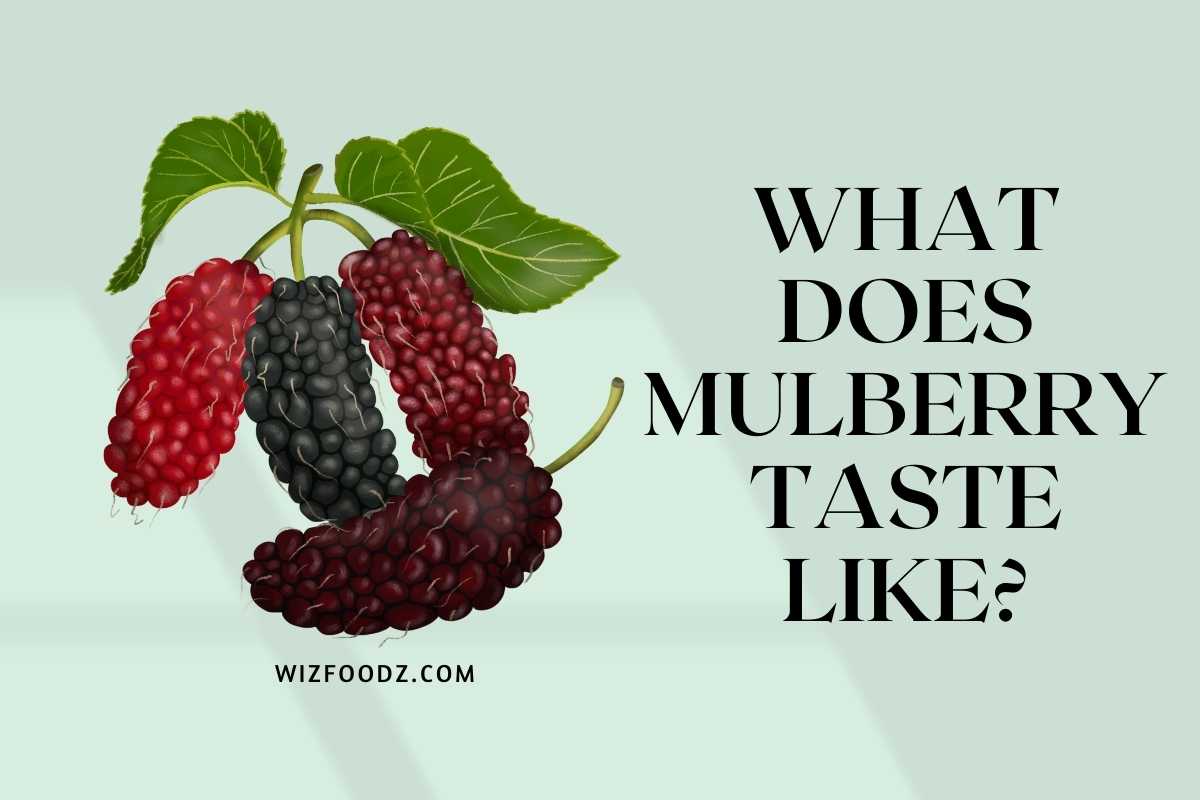There are different kinds of berries in the fruit world, and Mulberry is one of the most popular berries among them. Those who have yet to taste Mulberry might be curious about its taste. What does Mulberry taste like? Today, you will get an idea of the taste of Mulberry and will probably love them.
What Does Mulberry Taste Like?
Mulberry has a combination of sweet and acidic flavours. But it is not too tart on your tongue. It is just a hint of tartness. Sometimes, it gives you a hint of woody cedar or baking spices. To enjoy its full juiciness and taste, make sure to choose ripe ones because unripe mulberries may cause diarrhoea. You can have either fresh mulberries or sun-dried ones. Both ways are equally good, and you will definitely want another handful of mulberries.
Since there are different types of mulberries, it is better to talk about the flavours according to the kinds to get a better idea of the taste of Mulberry. The sweetest type of Mulberry is called ‘Black Beauty’ while the tartest type of Mulberry is called ‘Pakistan Reds’. And white coloured Mulberry gives you both sweet and sour flavours.
Get to Know About Mulberry fruit
Mulberry trees are grown in Asia and North America for fruits, decorations or raising silkworms. Both tropical and temperate environments are suitable for growing mulberries. Tropical mulberries blossom and bear fruits at the beginning of the spring, while mulberries in temperate environments blossom and bear from the middle of spring through the beginning of summer. And they are widely available in the middle of the summer.
The mulberry trees are similar to the Moraceae family and grow from small to medium-sized. Mulberry is also known as Morus. You also can pick fresh mulberries up from your own yard because you have to put a little effort into growing a tree.
And the fruit of mulberry trees is also called Mulberry, and they are eaten. The texture of the fruits is juicy and tender. And it is a dark-coloured berry and resembles a blackberry. But Mulberry is larger than blackberry. We can mainly see mulberries in four colours such as deep purple, black, red and white. The dark-coloured ones are pigmented, so you will have stains on your hand if you bruise them. The sweetest variety is called ‘Black Beauty’, and it is black in colour, while the variety of ‘Pakistan Reds’, also called Morus Rubra, looks like a darkened raspberry. The black Mulberry, also called Moru Nigra is the most common one among the varieties.
Nutrition Facts about Mulberry
When it comes to the nutrition facts of Mulberry, it is rich in vitamin C, minerals and antioxidants, especially anthocyanin. Vitamin C is beneficial for the skin and minimises the risk of cataracts. Apart from them, we can have approximately two grams of fibre and a quarter of protein from one cup of Mulberry. Fibres of Mulberry are really helpful for your digestion system. And every 140 grams contain only 60 calories, while they contain a high-water content.
Therefore, if you are on a diet, Mulberry is a beneficial fruit for you. Moreover, Regular consumption of mulberries can do a significant effect on slowing down your ageing process because it can improve blood circulation and oxygen distribution to tissues in the body. And they contain resveratrol which is a flavonoid, and it will help to control your blood pressure and cognitive diseases and disorders. What’s more, having inflammatory properties, they help to improve your immune system. And if you consume mulberries regularly, it will be helpful to reduce cholesterol and build bones. Phenolic acid, which is beneficial in preventing cancers and managing people with diabetes contains in mulberries.
When compared with other fruits, dried mulberries have a considerable amount of protein and iron. Accordingly, all the nutrition facts of Mulberry sound great for your overall physical as well as mental health.
How to Consume Mulberry?
You can be creative with your mulberries when you prepare them for eating. Simply, you can use them as your topping for breakfast cereal or yoghurt. And you can have them mixed with your breakfast smoothie. It will enhance the flavour of it. Otherwise, you can just eat them as a snack with whipped cream and honey. And do not forget to add some mulberries to your fruit salad because they give you not only a juicy sweetness on a hot day but also a colourful, eye-catching fruit bowl. And you can make delicious ice popsicles using some mulberries during the summer. These are some simple ways of consuming mulberries.
Now let’s discuss some advanced creations you can try with mulberries in your kitchen. You can follow a recipe to prepare some jams with mulberries; then, you will be able to consume them over a long period. Or try making ice cream with Mulberry and heavy cream. Another way to consume mulberries is you can add them when you make a loaf of banana bread for extra flavouring. And you can even make a mulberry pie using good-quality, ripe mulberries. Further, you will make sorbet using Mulberry, lemon and honey. The mulberry sorbet with some ice is so refreshing, and you are going to love it.
Thus, you can use mulberries to create various dishes. And your family will definitely impress if you try something new with mulberries like the ways described above. And also, we would like you to remind us that you can use mulberries as a substitute for other berries. Also, it is vital to know how to store mulberries as well. You can keep fresh mulberries in your fridge for two to three days. If you want to keep them for a long time, you can freeze them; then you will be able to keep them for up to six months.
How to Make Dried Mulberries at Home?
You can try dried mulberries, too, at home. You have to follow some simple steps to make them. First, carefully pull the green stem from the Mulberry. Next, clean them well to remove any dirt, putting them in cold water. Finally, place the mulberries in a dehydrator for drying. After thoroughly drying, you can easily break and taste them.
You May Also Like





